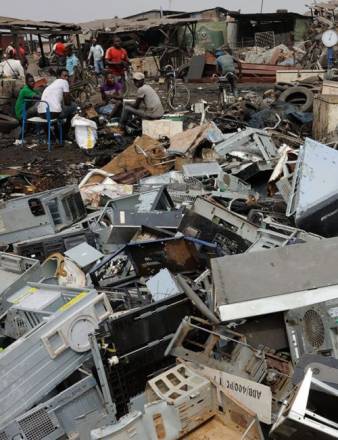80 million tons of waste per year
Electrical equipment consumes electricity during operation, so more and more people are upgrading to new, supposedly "energy-saving" models. But equipment doesn't only consume energy during operation. During production, energy was also required, in addition to metals and plastics, which then end up in electronic waste. If all the washing machines, dishwashers, dryers, electric stoves and refrigerators purchased in the EU were to be put in a row, this would reach once around the world. However, the number of these large household appliances is only 15% of all electrical and electronic equipment...
So the quantities of waste are correspondingly large: currently 12 million tonnes/year in the EU, almost 80 million tonnes worldwide!
Where does our electric and electronic waste end up?
Electronic waste is traditionally the fastest growing waste stream worldwide. Despite very good EU waste legislation, only one third is disposed of in accordance with the law. The authorities are simply overwhelmed by the quantities involved.
More about this in this Standard article.
We also interviewed the makers of the documentary "Welcome to Sodom". You can find the whole interview here.

Our recommendation
For the sake of the environment and future generations, we at R.U.S.Z. take into account the total environmental impact of electrical equipment: production, delivery, operation and disposal. In order to keep the ecological footprint low, it therefore makes ecological sense to use the equipment for as long as possible.
We therefore recommend that you keep your equipment as long as possible, have it repaired if necessary, buy Second-Life-Equipment instead of new or use hand me downs from friends and family.
Sepp Eisenriegler: "Don't fall for the energy efficiency lie!"
